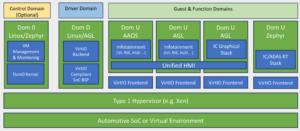About the Author
By Ryan Daws |
18th May 2023
Ryan is a senior editor at TechForge Media with over a decade of experience covering the latest technology and interviewing leading industry figures. He can often be sighted at tech conferences with a strong coffee in one hand and a laptop in the other. If it’s geeky, he’s probably into it. Find him on Twitter (@Gadget_Ry) or Mastodon (@gadgetry@techhub.social)
Network Lighting Control (NLC) is set to play a pivotal role in the development of smart buildings, as stakeholders such as building owners, energy companies, and regulators seek to enhance building performance and appeal.
According to a report by ABI Research, the deployment of related equipment in smart buildings is projected to reach nearly 220 million units by 2030, achieving a compound annual growth rate (CAGR) of 22.6 percent.
NLC enables intelligent automation and management of lighting systems within a building, offering additional advantages when combined with LED lighting.
By integrating lighting control with sensors for light level and occupancy, energy efficiency is improved, and benefits can be derived in terms of occupant comfort, safety, space utilisation, and overall building attractiveness.
The increasing adoption of wireless connectivity further facilitates the adoption of NLC in buildings of various sizes and types.
Jonathan Collins, Research Director for Smart Homes and Buildings at ABI Research, emphasises the significance of smart lighting as an initial investment in smart buildings, citing its widespread demand in commercial buildings.
“With a range of dynamic offerings, simplified installation and maintenance processes, NLC is expanding the capabilities of smart buildings beyond large-scale or high-profile projects,” states Collins.
Various market players, including established lighting companies such as Signify and Acuity Brands — as well as NLC providers like Casambi, Enlighted, INGY, Silvair, and Wirepas — are leveraging wireless technology to drive the adoption of NLC in new construction projects and retrofitting endeavors.
The deployment, configuration, and reconfiguration of NLC systems can now be carried out by engineers using smartphone apps, eliminating the need for dedicated network cabling and complex topologies that have traditionally been associated with such installations.
However, the NLC market currently exhibits a fragmented landscape with multiple approaches and vendor ecosystems.
Despite ongoing efforts to develop unified ecosystems for NLC, clients still face the challenge of evaluating conflicting technologies, approaches, and offerings to determine the most suitable solution for their present and future smart building requirements.
The report (paywall) by ABI Research provides valuable insights into the NLC market and highlights the emerging opportunities in smart building lighting.
(Photo by Johannes Plenio on Unsplash)
Want to learn about the IoT from industry leaders? Check out IoT Tech Expo taking place in Amsterdam, California, and London. The event is co-located with the AI & Big Data Expo.
Explore other upcoming enterprise technology events and webinars powered by TechForge here.
Ryan is a senior editor at TechForge Media with over a decade of experience covering the latest technology and interviewing leading industry figures. He can often be sighted at tech conferences with a strong coffee in one hand and a laptop in the other. If it’s geeky, he’s probably into it. Find him on Twitter (@Gadget_Ry) or Mastodon (@gadgetry@techhub.social)
Tags: abi research, internet of things, IoT, lighting control, network lighting control, nlc, report, smart buildings, study



